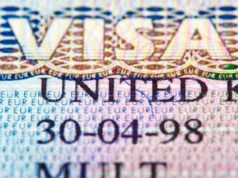
Introduction
The United States is a popular destination for individuals from all over the world who wish to visit, work, or study in the country. To enter the United States legally, individuals may obtain a visa. A visa is a document that allows the holder to enter the US for a specific purpose and duration of time. However, not all visa holders leave the US when their visa expires, leading to an overstay. This article will explore the statistics of those who overstay their visa in the US.
What is a Visa Overstay?
A visa overstay occurs when an individual remains in the United States after their visa has expired. This can happen intentionally or accidentally, and it is a violation of US immigration laws. Overstaying a visa will result in the individual being ineligible for future visas and may also result in deportation.
Statistics on Visa Overstays in the US
According to a report by the Department of Homeland Security (DHS), in 2019, there were 1.12 million individuals who overstayed their visa in the United States. The report shows that the overstay rate was 1.3 percent of the total number of non-immigrant admissions. Non-immigrant admissions refer to individuals who come to the US for a temporary period, such as tourists, students, and temporary workers.
The highest number of visa overstays were from the following countries: China, India, Brazil, Venezuela, and Colombia. The highest overstay rate was from the following countries: Djibouti, Eritrea, Chad, Liberia, and Bhutan.
The DHS report also shows that the overstay rate has been increasing in recent years. In 2015, the overstay rate was 0.9 percent, and by 2019 it had increased to 1.3 percent.
Reasons for Visa Overstays
There are many reasons why individuals overstay their visas in the United States. The most common reason is the desire to remain in the US for longer than the permitted duration. Some individuals may have obtained employment, started a business, or found love in the US, and wish to stay longer than their visa allows.
Other reasons for visa overstays may be due to circumstances beyond the individual’s control. For example, a traveler may become ill or experience a family emergency, which prevents them from leaving the US before their visa expires. Additionally, some individuals may have overstayed their visa unintentionally due to an error or misunderstanding when submitting their visa application.
Consequences of Visa Overstays
Visa overstays can have serious consequences for individuals who violate US immigration laws. These consequences may include being barred from entry into the US for years or permanently, inability to obtain future visas, and even deportation. Additionally, overstaying a visa can have negative effects on the individual’s credit score and employment opportunities.
Conclusion
Visa overstays are a growing concern in the United States, and the statistics show that the overstay rate has been increasing in recent years. Understanding the reasons for visa overstays and their consequences is essential for both visitors and the US government. It is important for individuals to comply with US immigration laws and follow the rules and restrictions of their visa to avoid overstaying and facing the consequences. At the same time, the US government needs to take steps to address visa overstays and find ways to prevent them from happening.
Statistics show that on average, the majority of Mexican immigrants with illegal residence overstay the duration set forth in the parameters of their respective VisasLatin AmericanAsia


















